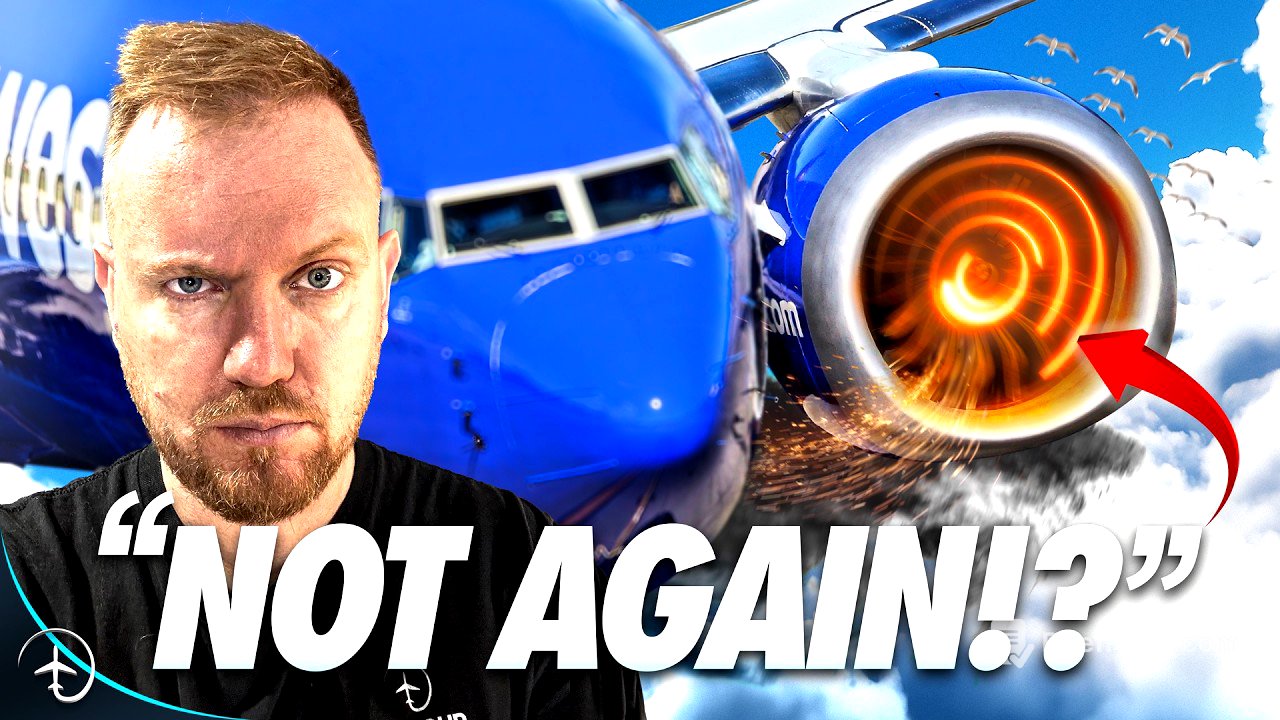TLDR;
This video discusses a concerning issue with the Boeing 737 MAX aircraft, where a system called the Load Relief Device (LRD) can cause severe safety problems if activated. The narrator highlights two incidents where the LRD activation led to the release of engine oil into the aircraft's air conditioning system, resulting in toxic smoke filling the cockpit. The video emphasizes the potential catastrophic consequences of this issue and the concerning response from the FAA, which initially did not take immediate action despite recommendations from its own investigators.
- The LRD system, designed to mitigate engine vibrations, has an unintended side effect of dumping engine oil into the air conditioning system when activated, leading to toxic smoke in the cockpit.
- Two incidents occurred in 2023 where the LRD was activated due to bird strikes, causing severe safety issues.
- The FAA's Corrective Action Review Board (CARB) initially decided not to take immediate action, despite recommendations from its own investigators to address the problem.
- The video raises concerns about the FAA's decision and the potential risks to pilots and passengers if this issue is not properly addressed.
Incident 1: Southwest Airlines Flight from Havana to Fort Lauderdale [2:28]
On March 5, 2023, a Southwest Airlines Boeing 737 MAX-8 was taking off from Havana, Cuba, bound for Fort Lauderdale, Florida. During the climb, the aircraft ingested a large turkey vulture into its right engine, causing severe damage. The pilots followed the appropriate procedures, securing the damaged engine and successfully executing a single-engine approach and landing back at the departure airport. While the incident was initially treated as a routine bird strike, it soon became clear that the activation of the LRD system had caused a significant issue.
Incident 2: Southwest Airlines Flight 554 from New Orleans to Tampa [8:20]
On December 20, 2023, another Southwest Airlines Boeing 737 MAX-8 was taking off from New Orleans, Louisiana, bound for Tampa, Florida. During the climb, the aircraft hit a large eagle, which severely damaged the left engine. This triggered the activation of the LRD system, which dumped engine oil into the air conditioning system, resulting in toxic smoke rapidly filling the cockpit. The pilots were able to don their oxygen masks and successfully land the aircraft, but the video highlights the potential for catastrophic consequences if the pilots had been incapacitated by the smoke.
Concerns and Recommendations
The video raises serious concerns about the FAA's response to this issue, as its Corrective Action Review Board (CARB) initially decided not to take immediate action, despite recommendations from its own investigators. The video suggests that the FAA's decision is puzzling and potentially dangerous, as it could put pilots and passengers at risk.
The video outlines several recommendations made by the FAA investigators, including:
- Requiring Boeing 737 MAX aircraft to perform takeoffs with one air conditioning pack turned off to mitigate the risk of toxic smoke in the cockpit.
- Implementing a design change to automatically close the affected engine's pressure regulating shut-off valve (PRSOV) in the event of a bird strike or fan blade failure, to prevent the release of engine oil.
- Ensuring that all new design features on the Boeing 737 MAX are adequately explained in the pilots' manuals.
- Requiring the use of single-piece oxygen mask and goggles designs in the cockpit to reduce eye exposure to toxic smoke.
- Reassessing the likelihood of LRD activation, as the two incidents occurred much closer together than expected during the initial certification process.
The video encourages viewers, especially American citizens, to contact their representatives in Congress to investigate the FAA's decision and ensure that appropriate actions are taken to address this critical safety issue.
